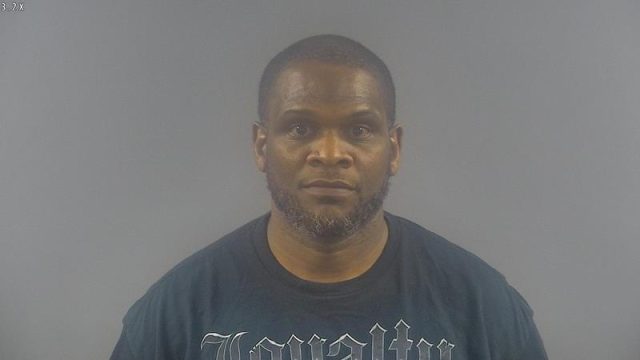‘Future Crimes’ offers sobering look at likely digital breaches
Published 2:00 am Sunday, November 6, 2016
“Future Crimes: Inside the Digital Underground and the Battle for Our Connected World” by Marc Goodman. New York: Anchor Books (an imprint of Penguin Random House), 2016. 608 pages, $17.
“Criminals perpetually update their techniques to incorporate the very latest emerging technologies into their modi operandi,” Marc Goodman explains near the beginning of “Future Crimes: Inside the Digital Underground and the Battle for Our Connected World,” his New York Times best-selling foray into the complicated and often murky world of cyber security. “They have evolved well beyond the days when they were the first on the street carrying pagers and using five-pound cellphones to send coded messages to one another. Today, they are building their own nationwide encrypted cellular radio telecommunications systems, like those employed by the narco-cartels of Mexico. …
Trending
“Consider for a moment the sophistication required to establish a fully functioning encrypted nationwide communications network – an amazing feat, especially because many Americans still can’t get a decent mobile signal most of the time,” he continues. “Organized crime groups have established themselves as early adopters of technology. Criminals embraced the online world long before the police ever contemplated it, and they have outpaced the authorities ever since.”
Currently, one of my favorite TV shows is “Mr. Robot,” USA Network’s series about the darker side of our all-too-connected world in the 21st century. Sam Esmail, the show’s creator, has gone to considerable lengths to make sure the capabilities of the technology on display are realistic and the plot lines are within the realm of possibility. The further I got into “Future Crimes,” the more I realized how plausible much of what is depicted on the program actually is – the futuristic environment that serves as the backdrop for Esmail’s evolving storyline perfectly parallels the ever-more-menacing world Goodman describes on virtually every page.
“Future Crimes” is meticulously researched, with 34 pages of source notes at the conclusion of the 18 chapters comprising the main text. Conceptually, the manuscript is arranged in three major sections: “A Gathering Storm,” which comprises the first nine chapters; “The Future of Crime,” which is made up of the next seven chapters; and “Surviving Progress,” which consists of the last two chapters. Although the prose gets a little technical in some places, overall I was able to follow his arguments with minimal difficulty; I only had to pause and Google the terminology on a couple of occasions.
The further you get into this detective story – it has all the trappings of a good cat-and-mouse novel – it becomes abundantly clear that anyone with the right set of skills and access to any device connected to the internet can wreak havoc on a relatively large scale. One of Goodman’s main points is that the people who engage in these kinds of nefarious pursuits tend to be light years ahead of our ability to adequately monitor or contain them. One hacker sitting in an internet cafe in Siberia can potentially bring the entire global financial system to a complete standstill; it could take a team of experts in counterterrorism working around the clock weeks to figure out exactly what happened and who was responsible. There is no such thing as an impenetrable firewall to someone who knows the intricacies of computer code.
The Chair for Policy, Law, and Ethics at Silicon Valley’s Singularity University (a joint venture between NASA and Google), Goodman is also the founder of The Future Crimes Institute. His résumé includes a stint as futurist-in-residence with the FBI in addition to more than 10 years as a senior adviser to Interpol’s Steering Committee on Information Technology Crime. He has a master’s of public administration from Harvard University and a master’s of science in the management of information systems from the London School of Economics. His articles have appeared in numerous publications including the Harvard Business Review, The Atlantic and Forbes, and, although he has authored chapters in several edited volumes, this is his first book.
“Future Crimes” is simultaneously insightful and frustrating. It is enlightening in that Goodman is trying to get us to wake up to the tremendous potential for disaster that lies just around the corner if we do not begin to devote the substantial resources needed to ensure that the data on which we increasingly depend is as secure as possible against the forces determined to obliterate our way of life. At the same time, the author conveys an undeniable sense of hopelessness regarding our ability to ever get the upper hand in the constant struggle to contain the genie Silicon Valley has inadvertently let out of the bottle. There is no going back; the best we can do is to try and minimize the damage when unfortunate circumstances conspire against us. Certainly, any illusion of privacy we may have had is quickly evaporating with each new server that comes on line.
Trending
“The emerging legacy of big data may well be one of persistent surveillance, the abolition of privacy, and a rash of criminal threats never previously envisioned,” Goodman cautions in “I.T. Phones Home,” the seventh chapter and one I found particularly unsettling. “Social media, smartphones, mobile apps, the cloud and a host of other technologies mean not only that Nordstrom, Acxiom, Facebook and Google can find you at will, but so too can the Zetas, Lashkar-e-Tabia, domestic abusers and stalkers. What most people do not understand, however, is that any data collected will invariably leak. Our current computing systems are too insecure to safely store the volumes of information we are generating.”
As Goodman warns in the prologue, “If you proceed in reading the pages that follow, you will never look at your car, smartphone or vacuum cleaner the same way again.”
I remember chuckling to myself when I read this just before diving into this fascinating tome. By the time I got to the epilogue, any feeling of skepticism I had was gone, along with any trace of that initial smile I had on my face. This is a very sobering book; I recommend it highly.
— Reviewed by Aaron W. Hughey, Department of Counseling and Student Affairs, Western Kentucky University.






